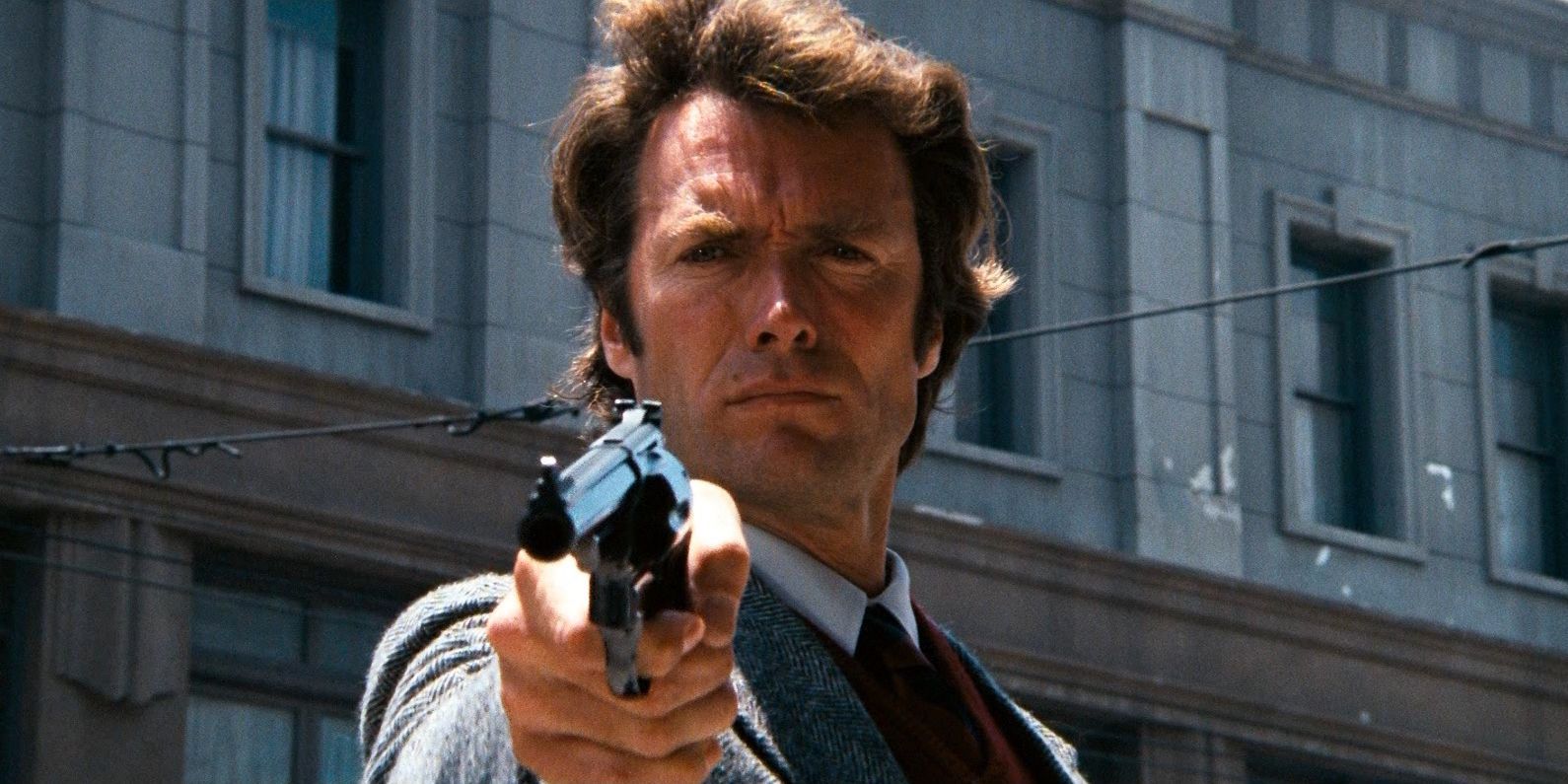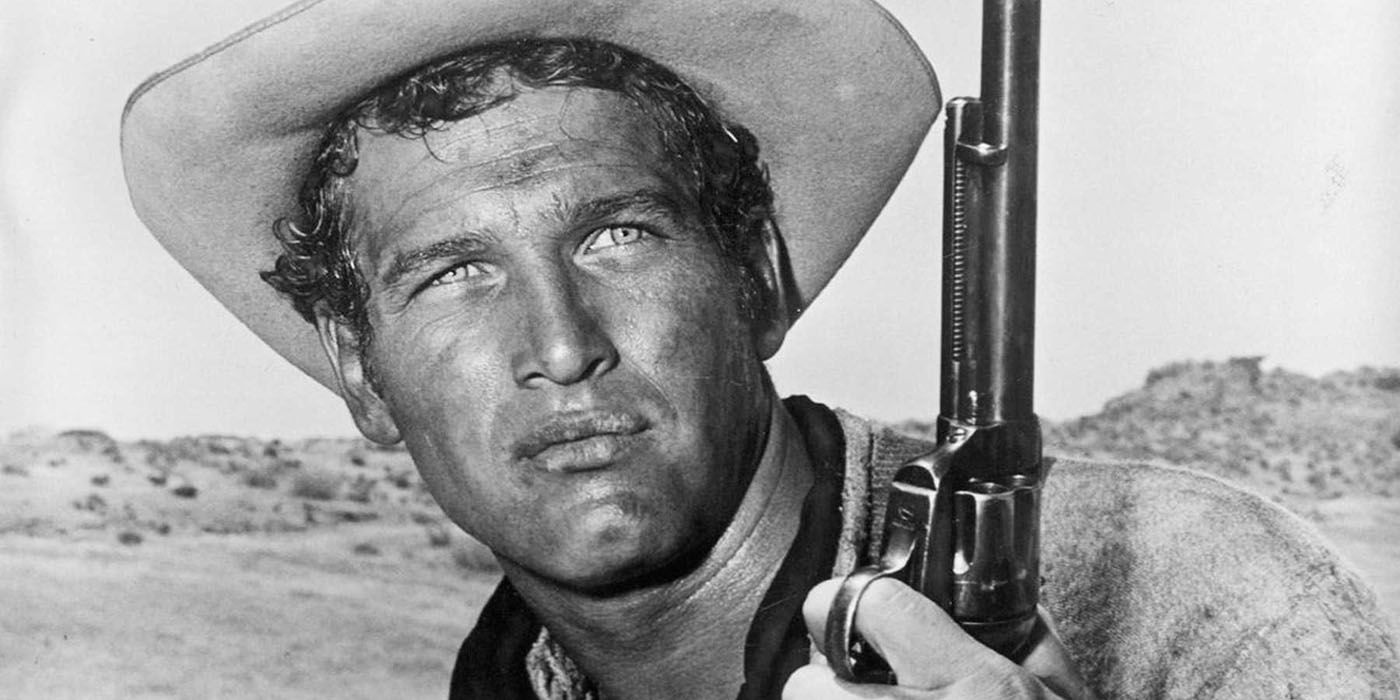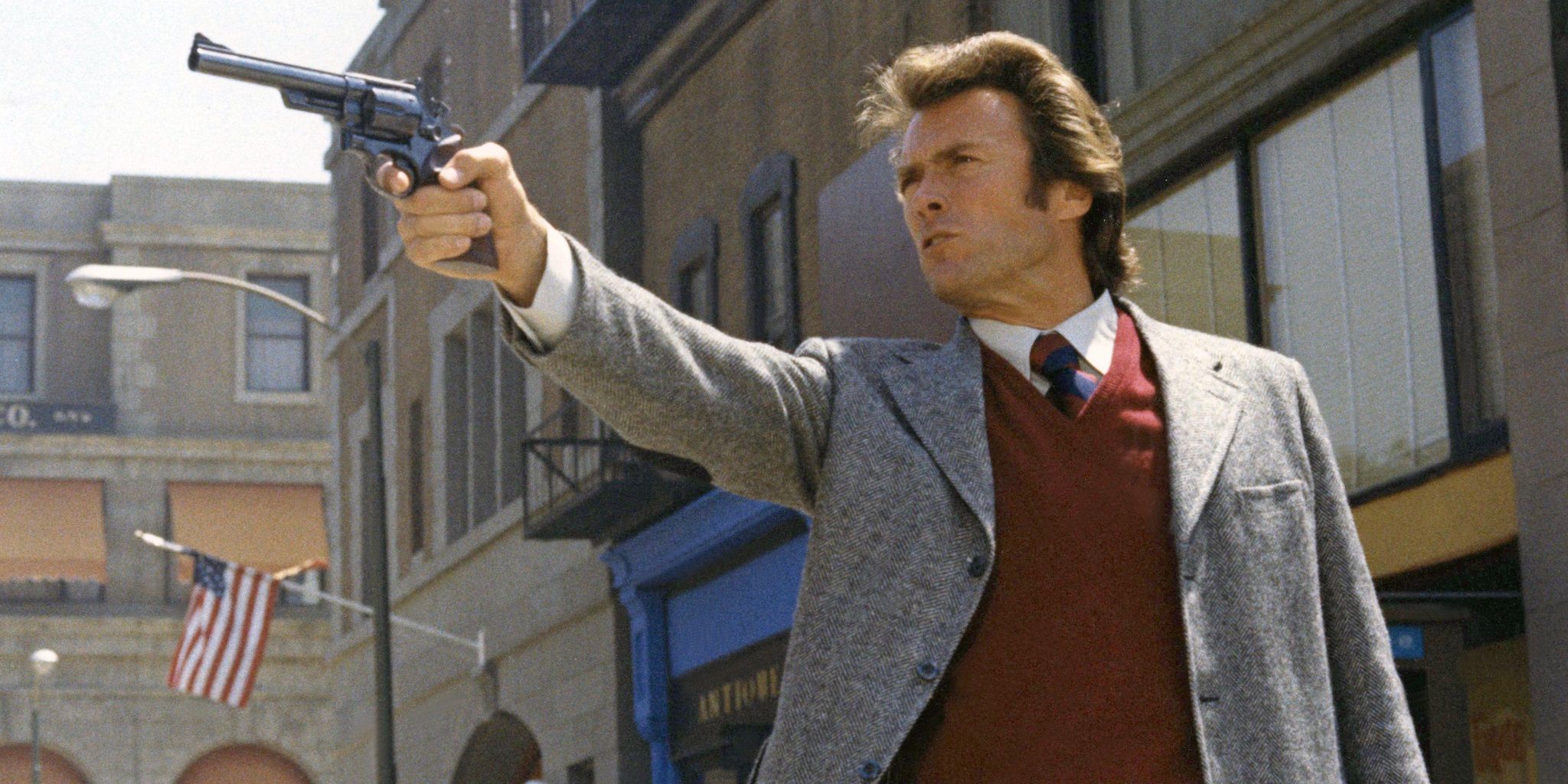Clint Eastwood
7 Best And 7 Worst Clint Eastwood Movies
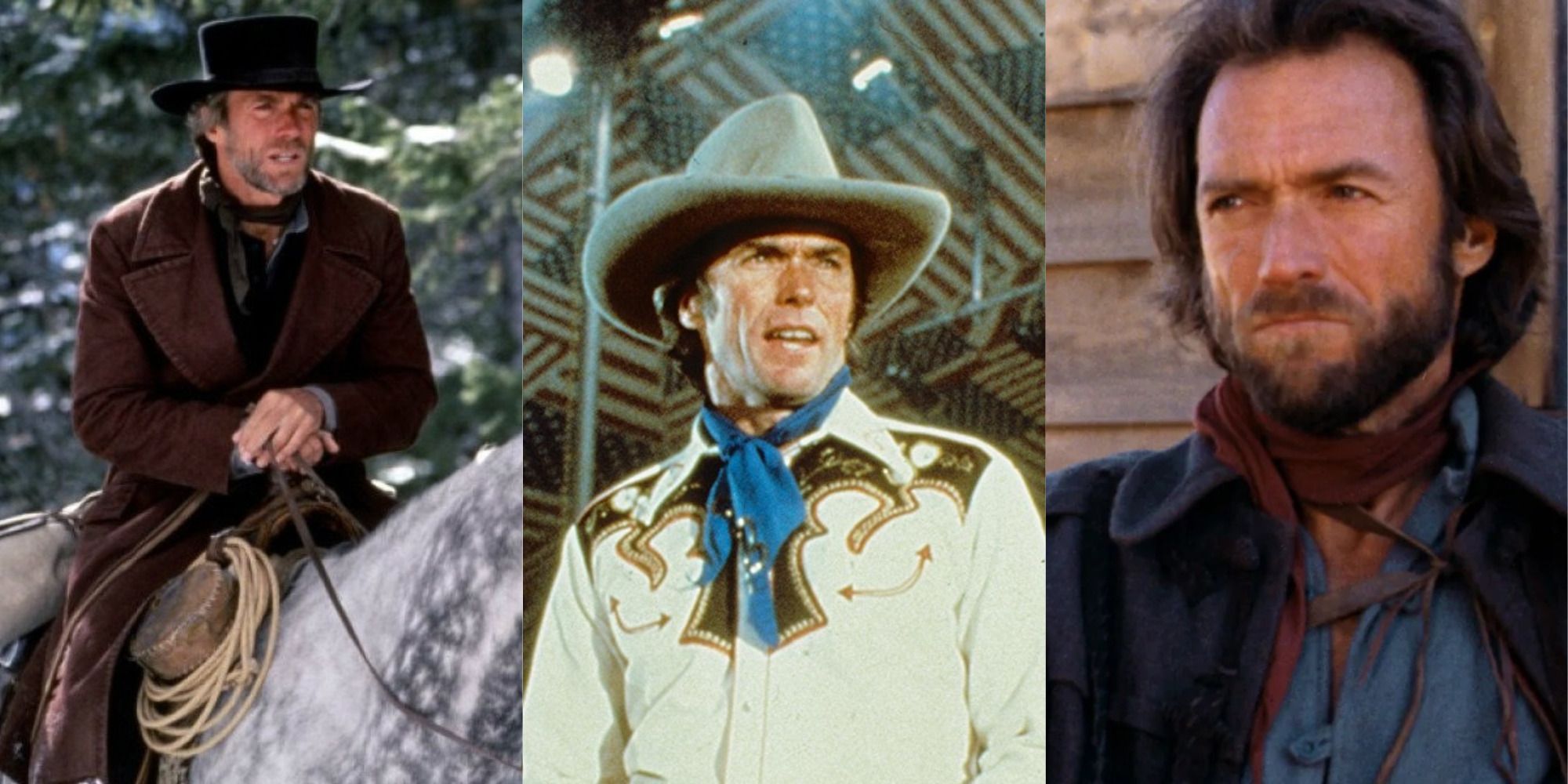
Any “Mount Rushmore of Movie Stars” must include Clint Eastwood’s iconic squint, though no stone could possibly do his granite jawline justice. Born May 31, 1930, Eastwood has been a movie star longer than most people’s parents have been alive. Heck, he’s been famous since before some people’s grandparents were alive! Eastwood started working as an actor in 1954, landing bit parts in B-movies like “Tarantula” and “Revenge of the Creature” before his breakout role as Rowdy Yates in TV’s “Rawhide” in 1959. Eastwood wanted to branch out to the big screen, but he was handcuffed by Hollywood’s mistaken belief that nobody would buy a ticket to see an actor they could watch for free on TV. Bad call, Hollywood.
So Eastwood went to Italy, playing the Man with No Name in “spaghetti Westerns” for director Sergio Leone. Eastwood has been a movie star ever since. His career box office is $2.4 billion worldwide, which is even more impressive given his biggest hits were pre-multiplex. His starring role in 2018’s “The Mule” opened to $17 million and made $173 million worldwide — at 88 years old! There are stars one-third his age who couldn’t manage that. Eastwood makes it look easy. What isn’t easy is knowing where to begin when reviewing his acting career, but we’re here to help (“Do you feel lucky?”). With Rotten Tomatoes as our guide, here are the seven best and seven worst Clint Eastwood movies!
Worst: Dirty Harry’s finale, The Dеаԁ Pool, underwhelmed
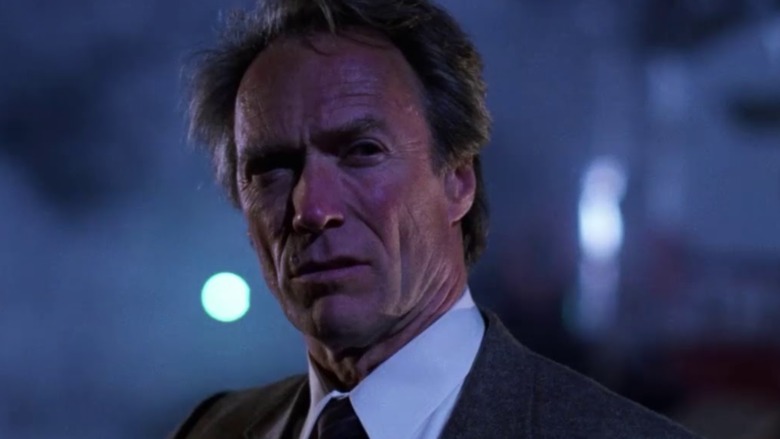
Before you get too excited, no, the Man with No Name never played the Merc with A Mouth. So Ryan Reynolds, your “Dеаԁpool” legacy is safe (give or take “X-Men Origins: Wolverine”). Released in 1988, “The Dеаԁ Pool” is the fifth and final “Dirty Harry” movie … or at least the last one with Clint Eastwood, since a reboot starring an unworthy, pencil-necked pretender seems inevitable. Eastwood plays his most famous character, Harry Callahan, the one-liner spewing, .44 Magnum-shooting, San Francisco police detective who never met a perp he didn’t want to pummel.
The perp in “The Dеаԁ Pool” is a serial κıււеr who’s taking out celebrities (including a punk rocker played by Jim Carrey in one of his first roles) on a “Dеаԁ pool” put together by a horror director played by Liam Neeson. It’s up to Dirty Harry to make the punk pay … and make his day (oh wait, that was from “Sudden Impact”). As for why it ranks so low, it’s largely because “The Dеаԁ Pool” is just an unoriginal thriller that pales in comparison to earlier films in the franchise. Anyway, despite being one of Eastwood’s worst, it’s not that bad, but the Tomatometer has spoken with a 55% from critics and 44% from audiences.
Best: Critics sung praises for Honkytonk Man
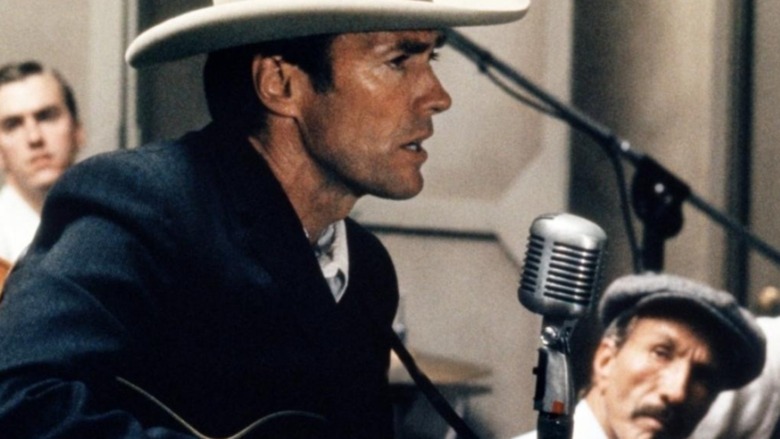
Clint Eastwood made himself a legendary movie star (and a multi-millionaire) playing cowboys, detectives, and more recently, grumpy old men who take no lip. But one of his most interesting roles was Red Stovall, a Depression-era, wannabe country music singer dying of tuberculosis in 1982’s “Honkytonk Man,” which Eastwood also directed. This is Eastwood’s second most famous singing role (probably his second singing role ever) after 1969’s “Paint Your Wagon,” which would’ve made the worst list with its 27% critic’s score, but audiences saved it with a 68% rating.
While audiences were slightly less into “Honkytonk Man” (64% audience score on Rotten Tomatoes), critics liked it much more (93% score). We’re with the critics. While “Honkytonk Man” clearly wishes it was “Paper Moon,” it’s still a sweet “grown-up and kid on the road” movie that manages to make you smile, not gag. Joining Eastwood in the film is his son, Kyle, playing Red Stovall’s nephew. While it’s fun watching Eastwood play against type, not many people saw it, as “Honkytonk Man” bombed with $3.6 million. Fortunately, Eastwood was back one year later in “Sudden Impact,” the fourth movie in the “Dirty Harry” franchise.
Worst: Blood Work didn’t work
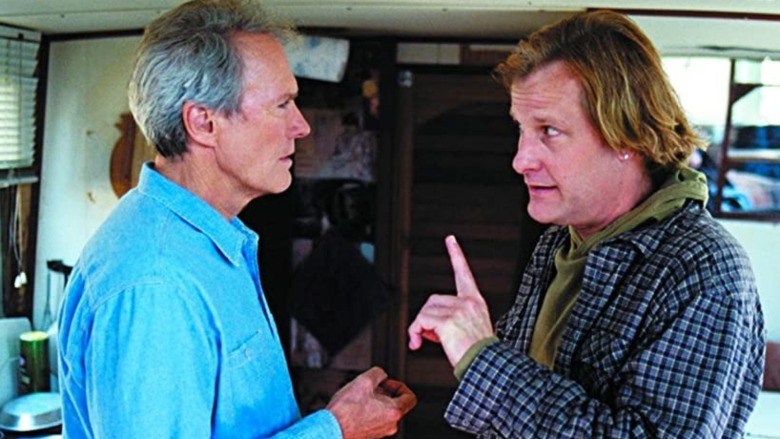
Paint-by-numbers serial κıււеr dramas were all the rage well into the 2000s. In fact, we’re pretty sure Ashley Judd starred in a movie called “Paint by Numbers.” Sadly, Eastwood got in on the game too, resulting in a movie that’s solid enough for the genre but one of his worst.
Eastwood directs and stars in 2002’s “Blood Work,” playing Terry “Don’t Call Me Dirty Harry” McCaleb, a former FBI profiler who seems suspiciously like Dirty Harry. McCaleb suffered a heart attack while hunting “the Code κıււеr.” When McCaleb discovers his new heart came from one of the κıււеr’s victims, McCaleb reopens the unsolved case. You’ll probably be able to figure out who the κıււеr is before the opening credits are over, though given the demands of the genre, it takes McCabe the film’s nearly two-hour runtime. It’s pretty routine, but if your routine is “watch a Clint Eastwood movie on TNT on a Thursday,” it’s fine. However, with a 52% critics’ score and 40% audience score on Rotten Tomatoes, any viewer expecting a classic is bound to have a change of heart.
Best: This Western is one of Eastwood’s greatest films
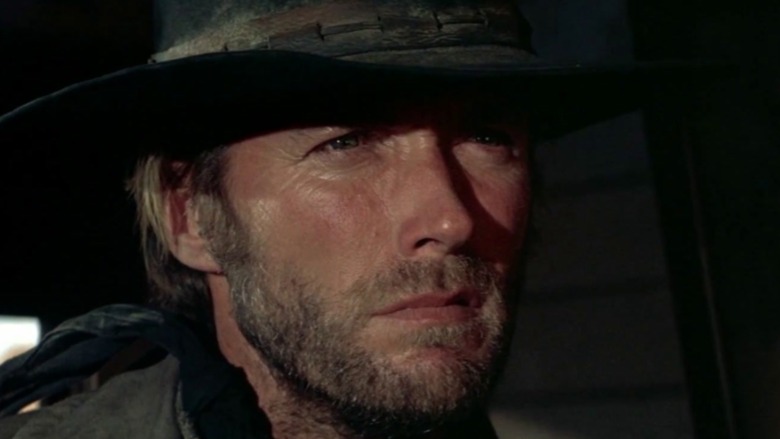
Clint Eastwood shocked the movie business when his 1971 directorial debut, “Play Misty For Me,” turned out really good, with an 84% critic’s score and 72% audience score. In 1973, Eastwood was back in the director’s chair — and back in the saddle — for his second film and his first of many Westerns as a director, “High Plains Drifter.” Eastwood again plays a man with no name, the Stranger, who wanders into a town where the locals are terrorized by bandits.
Amazed by his ɡսոѕւıոɡıոɡ, the townspeople hire the Stranger to take out the bad guys. Hey, who needs seven samurai when you can get one Clint Eastwood? But there’s more to this movie than the simple premise suggests, and by the time the end credits roll, you’ll nod your head at the big reveal once you realize what “High Plains Drifter” had hidden up its sleeve all along. With a 93% critics’ score and an 86% audience score on Rotten Tomatoes, “High Plains Drifter” isn’t just one of Eastwood’s best Westerns — it’s one of his best movies, period.
Worst: This ‘Eastwood meets Bond’ movie should’ve been better
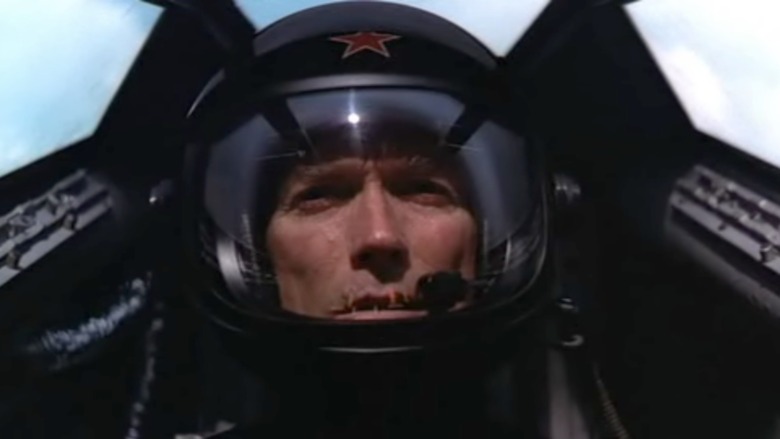
When it comes to “Firefox,” we’re happy to say Clint Eastwood didn’t make a movie about the web browser of the same name, though mindlessly surfing the web is a better use of your time. Here, the titular Firefox isn’t a search engine but a state-of-the-art Soviet fighter plane, which veteran American pilot Eastwood has been assigned to find. It’s okay, but if “Firefox” was supposed to be “Clint Eastwood in a James Bond movie,” then it should’ve been a lot more entertaining.
Eastwood also directs, so he should be thankful he cast a movie star (himself) in the lead role, as his direction is slow and ponderous when it should be, well, James Bond-ian. Less “Hunt For Red October,” more “For Your Eyes Only”. Had Eastwood cast a less charismatic movie star than himself, “Firefox” would’ve put moviegoers to sleep. Eastwood’s star power in these sorts of roles was enough to propel “Firefox” to $45 million worldwide, making a slight profit on a $21 million budget. This fighter jet dodged a bullet, but with a 38% critics’ score and 42% audience score on Rotten Tomatoes, “Firefox” didn’t fly far.
Best: In the Line of Fire proved Eastwood still had star power
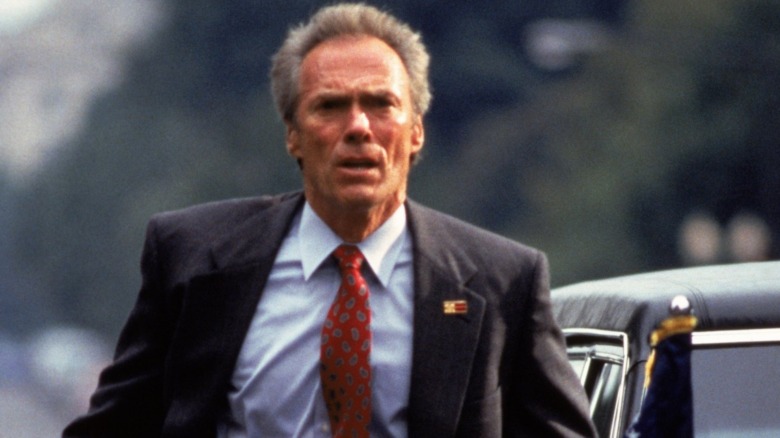
Clint Eastwood was riding high after taking home Academy Awards for Best Picture and Best Director for “Unforgiven.” Rather than retire (or heck, take a vacation), Eastwood took it easy (for him) and only acted in his next role, “In the Line of Fire.” The film tells the story of a guilt-ridden Secret Service agent trying to protect the president, and Wolfgang Petersen, the German director behind such divergent titles as “Das Boot” and “The NeverEnding Story,” sat in the director’s chair. It turned out pretty well, as “In the Line of Fire” was one of the biggest hits and best movies of either man’s career.
Despite opening less than a month after “Jurassic Park,” “In the Line of Fire” scratched an itch with Eastwood’s fanbase of “grown-ups who like action movies,” opening to $15 million and legging it out to $102 million domestically and $187 million worldwide. In other words, it was Eastwood’s biggest hit adjusted for inflation at that point. There’s a reason for this -– “In the Line of Fire” is really good, getting a 96% critics’ score and 79% audience score on Rotten Tomatoes. While “Unforgiven” cemented Eastwood’s status as an artist, “In the Line of Fire” proved he still had it as a movie star.
Worst: This movie was a rookie mistake
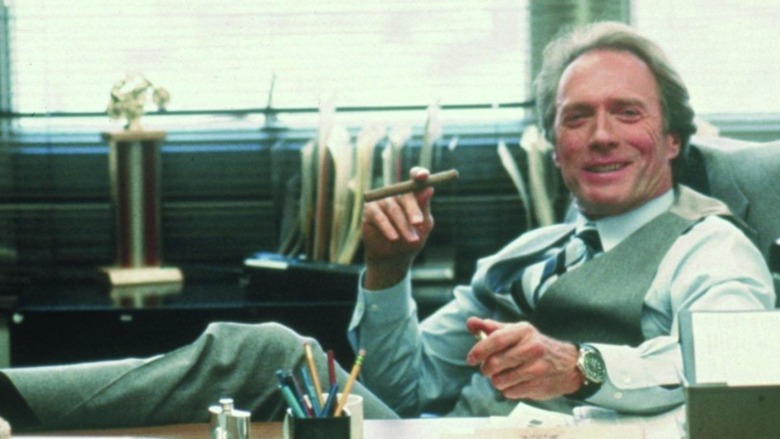
“The Rookie” follows the time-honored tradition of an established star (Eastwood) passing the torch to the up-and-comer (Charlie Sheen). It didn’t work. At all. Eastwood directs the film and plays an aging police detective, and Sheen plays the titular rookie. The mismatched pair have to put aside their differences to take on a car-theft ring led by Raul Julia. When your movie’s villain is played by Raul Julia and it’s still unwatchable, you know it’s bad.
The biggest problem (of many) with “The Rookie” is that Eastwood and Sheen have zero chemistry. The rookie role would’ve been better served by someone like Tom Cruise or Mel Gibson, two actors who didn’t need the rub at that point. “The Rookie” bombed, earning just $21 million in 1990, while over on Rotten Tomatoes, its 29% critic’s score and 36% audience score is the worst of Eastwood’s directorial career. Given he followed up “The Rookie” two years later with “Unforgiven,” we’d say things worked out okay.
Best: Escape from Alcatraz is one of the best breakout movies
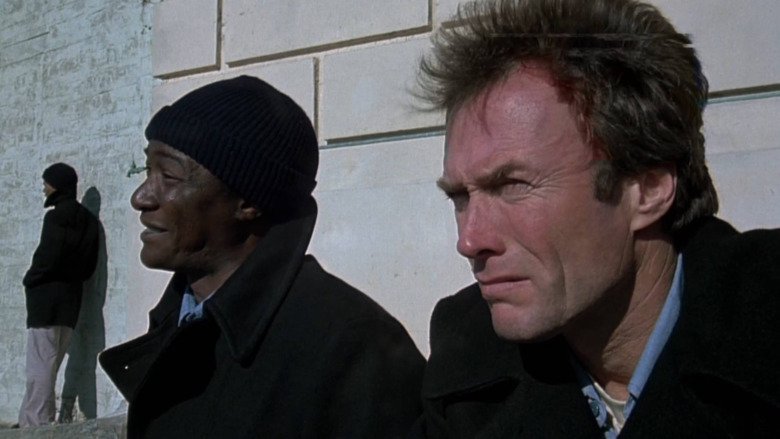
We’ll just come out and say it — there aren’t enough Alcatraz movies. The genre is so rock solid (pun 100% intended) that not even Michael Bay could screw it up. When you pair the genre with Clint Eastwood and Don Siegel, the director and star of numerous action hits, including “Dirty Harry,” you get the genre classic “Escape from Alcatraz.” As the title implies, “Escape from Alcatraz” is the true story of Frank Morris (Eastwood), an experienced prison escape artist who plots a breakout from the “inescapable” island prison outside of San Francisco.
We can debate the morality of casting Clint Eastwood as the “hero” when he’s playing a real-life, hardened criminal, but besides all that, “Escape from Alcatraz” is just a really good movie. Pardon the cliche, but it’s the kind of “thriller for grown-ups” they don’t make anymore. “Escape from Alcatraz” was a hit, earning $43 million in 1979, about $156 million today. And it’s one of Eastwood’s best movies, with a 96% critics’ score and 85% audience on Rotten Tomatoes. There’s no escaping this fact — “Escape from Alcatraz” is awesome.
Worst: City Heat was just sad
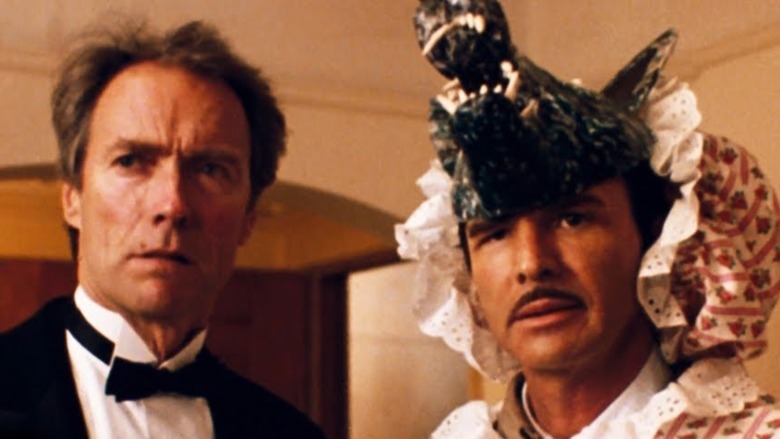
Sylvester Stallone and Arnold Schwarzenegger starred in “Escape Plan” decades past their heyday, and “City Heat” was a similar situation. It starred the two biggest stars of the 1970s, Clint Eastwood and Burt Reynolds, who by 1984 seemed to be past their primes. Sadly, that turned out to be true for Burt Reynolds, though Clint Eastwood reinvented himself in the early ’90s. Pairing Eastwood with Burt Reynolds seemed like a sure thing, but “City Heat” was too little, too late, and way too awful.
The film, in which Eastwood and Reynolds are both miscast as Humphrey Bogart-like 1930s gumshoes, made a so-so $38 million – pretty mediocre considering it starred two guys who could’ve beaten that number on their own just a few years before. The fact it’s terrible didn’t help, with 22% from critics’ and 24% from audiences over on Rotten Tomatoes. In another universe, there’s a blockbuster ’70s movie where Eastwood plays a humorless detective and Burt Reynolds a smart aleck criminal. In this universe, we have to suffer through “City Heat.”
Best: Unforgiven is an Eastwood masterpiece
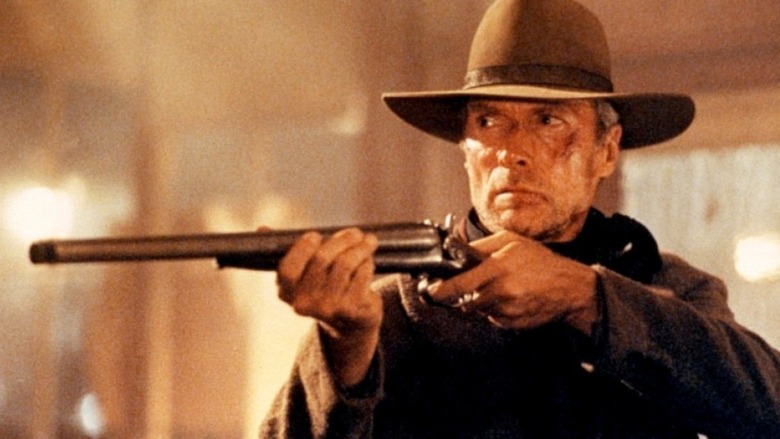
The revisionist Western is a sub-genre itself. In fact, do they even make old-school Westerns anymore? Not after “Unforgiven,” the best and most celebrated revisionist Western of them all, which was directed by one of the genre’s best directors and featured one of its biggest stars. Both are the same man — Clint Eastwood.
“Unforgiven” is the tale of a reformed κıււеr who, desperate for cash, takes one last job and crosses paths with a violent sheriff (Gene Hackman). It’s also one of the rare instances of a director commenting both on the genre that made him famous and his own screen persona. Kinda like if Sylvester Stallone made a boxing movie about a pugilist that wasn’t “Rocky.” While much ink has been spilled about the meaning of “Unforgiven” in the three decades since its release, we imagine the notoriously unpretentious Eastwood just figured he was a filmmaker lucky enough to land a great script.
“Unforgiven” made Eastwood a two-time Oscar winner, taking home Best Director and Best Picture in 1993. Unlike many Best Picture winners, its reputation has only grown with age. “Unforgiven” is an absolute masterpiece, and the Tomatometer backs us up. The film boasts a 96% from critics and 93% from audiences, a rare across-the-board crowd pleaser and his best movie as a director.
Worst: Pink Cadillac crashes and burns
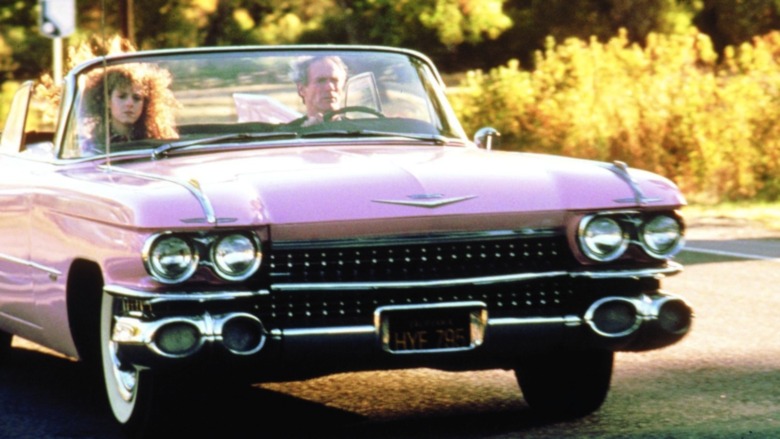
The 1980s was a big decade for American movies … but not so much for Clint Eastwood. Eastwood’s movies still made money, especially when he was Dirty Harry or co-starring with an orangutan, but the future four-time Oscar winner was in a creative rut. And despite being the biggest movie star of the ’70s, he was now trailing new stars like Harrison Ford, Tom Cruise, Mel Gibson, Sylvester Stallone, and Arnold Schwarzenegger. Eastwood closed the 1980s with one of his biggest creative and commercial misfires, “Pink Cadillac.”
The tone deaf, unfunny comedy about a bounty hunter chasing an attractive bail jumper was swallowed by the triple whammy of “Indiana Jones and the Last Crusade,” “Ghostbusters II,” and “Batman” when it was released in May 1989, earning $12 million total, less than those blockbusters made in two days. Solid counter-programming can survive and even thrive in the face of a blockbuster, but “Pink Cadillac” crashed and burned, with a 21% critics’ score and 24% audience score on Rotten Tomatoes. Eastwood started the 1990s with two more bombs (“White Hunter, Black Heart” and “The Rookie”) before reasserting his star power with “Unforgiven.”
Best: A Fistful of Dollars made Eastwood a star
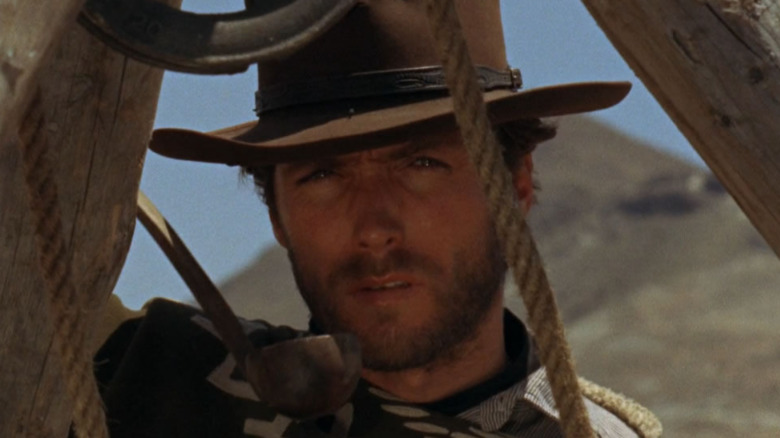
Clint Eastwood was an up-and-coming TV star when he took a flight to Italy and made a movie that changed his life — and cinema — forever. The film was “A Fistful of Dollars.” The director was Sergio Leone. The story was Akira Kurosawa’s “Yojimbo,” which Leone and company never got permission to remake … whoops. It didn’t matter, as “A Fistful Of Dollars” was so awesome that it made Eastwood a star, and it’s still one of his best movies ever, with a 98% score from critics and 91% from audiences on Rotten Tomatoes.
That’s about on par with the 95% critics’ score and 96% audience score for “Yojimbo,” making it one of the best remake ever too, which may have something to do with the fact it’s a ѕһot-for-ѕһot remake in places. While direction is important, not just any actor can don Toshiro Mifune’s kimono. Okay, Eastwood didn’t either — the Man With No Name wore a poncho — but still, only a movie star of Eastwood’s magnitude could take this role and make it so iconic.
Worst: Eastwood’s worst movie stinks worse than an ape
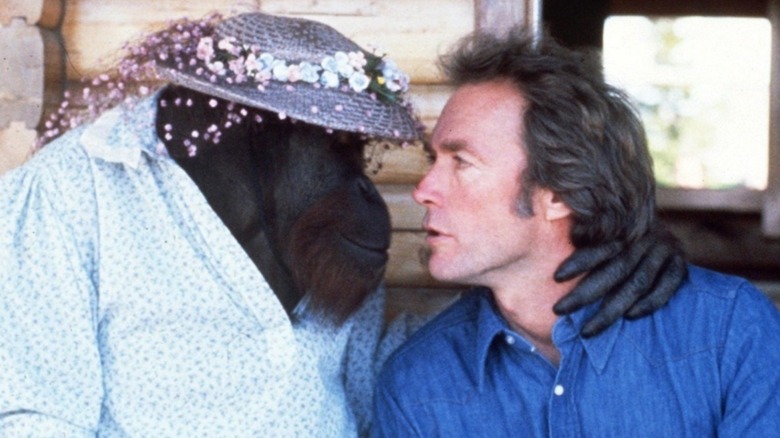
What was Eastwood’s biggest box office hit, adjusted for inflation? Not “Million Dollar Baby,” “Unforgiven,” or “Dirty Harry” …but “Every Which Way but Loose.” Yes, the orangutan movie. With $104 million, $422 million adjusted for inflation, “Every Which Way but Loose” earned more in North America than any other Eastwood movie, even his biggest directorial hit, “American Sniper.” But we’re not here to talk about that orangutan movie — we’re talking about its sequel, “Any Which Way You Can.”
With $70 million domestically, over $200 million adjusted, “Any Which Way You Can” was also one of Eastwood’s biggest hits … and also his worst ever movie according to Rotten Tomatoes, with 20% from critics and 45% from audiences. While the reviews are mostly bad, they’re scattered, with Roger Ebert saying, “It’s hard not to feel a grudging affection for it,” while Nick Schager says it’s maybe “Eastwood’s most disposable movie.” We’ll take critic Rob Vaux’s advice: “It’s Eastwood. It’s a monkey. It’s a lot funnier if you’re blind drunk.” Hey, when a movie’s this bad, you have to watch it any which way you can.
Best: The Good, the Bad and the Ugly is the best
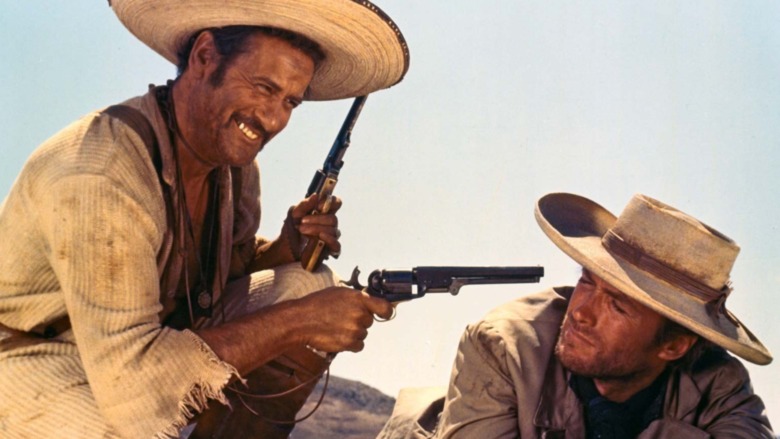
Cue the iconic whistle. “The Good, the Bad and the Ugly” is Clint Eastwood’s best movie. However, there’s a caveat. While “A Fistful of Dollars” has a critics’ score only 1% higher (98% versus 97%), its audience score is a bit lower (91% vs. 97%). So “The Good, the Bad and the Ugly” is an across-the-board favorite. Just to cement its spot atop our list we consulted IMDb, where it landed a 8.8/10 score compared to “A Fistful of Dollars” getting 8.0/10. So we feel good about putting about putting this particular spaghetti Western at number one.
Though to be honest, both are must-watch movies, as is the second film in the “Dollars Trilogy” – “For A Few Dollars More” – which just barely missed the cut with a 92% critics’ score and 94% audience score. What can we say? Eastwood has been in a lot of classics, which removes the stink of “The Rookie” and “Pink Cadillac” … more or less. But when it comes to the top spot, there can be only one — “The Good, the Bad and the Ugly.”
You may like
Clint Eastwood
Mystic River: Why Clint Eastwood’s Best Movie Still Holds Up Today

A filmmaker of Clint Eastwood‘s caliber is going to have a filmography full of gems. Primarily known for his work in Westerns, biopics, and military dramas, every so often, Eastwood steps outside his comfort zone and delivers in a genre that would seem completely unexpected on paper. That happened in 2003 with Mystic River, a neo-noir murder mystery drama that seems a bit forgotten or overlooked, even though it was a financial success and earned six Academy Award nominations. It represents Eastwood at his very best, breathing vivid life into complex characters as he examines a plethora of themes that range from loyalty, friendship, revenge, and, ultimately, forgiveness.

Mystic River is based on the 2001 novel of the same name by Dennis Lehane, and it follows the lives of three childhood friends, Jimmy Markum (Sean Penn), Sean Devine (Kevin Bacon), and Dave Boyle (Tim Robbins), living in Charlestown, Boston in 1975. Dave is kidnapped by two men claiming to be police officers, and he’s sexually abused by them over a four-day period until he escapes. The traumatic event shapes the three friends, and they ultimately lead very different lives twenty-five years later.
Jimmy is an ex-con that now owns a convenience store in the neighborhood, Sean works for the Massachusetts State Police as a detective, and Dave is your everyday blue-collar worker that still lives with the trauma of being abducted and raped. Their lives are forced together once again through tragedy when Jimmy’s daughter Katie (Emmy Rossum) is found murdered, and friendship is tested when all signs point to Dave being the murderer.
Mystic River Is a Departure From Clint Eastwood’s Other Work
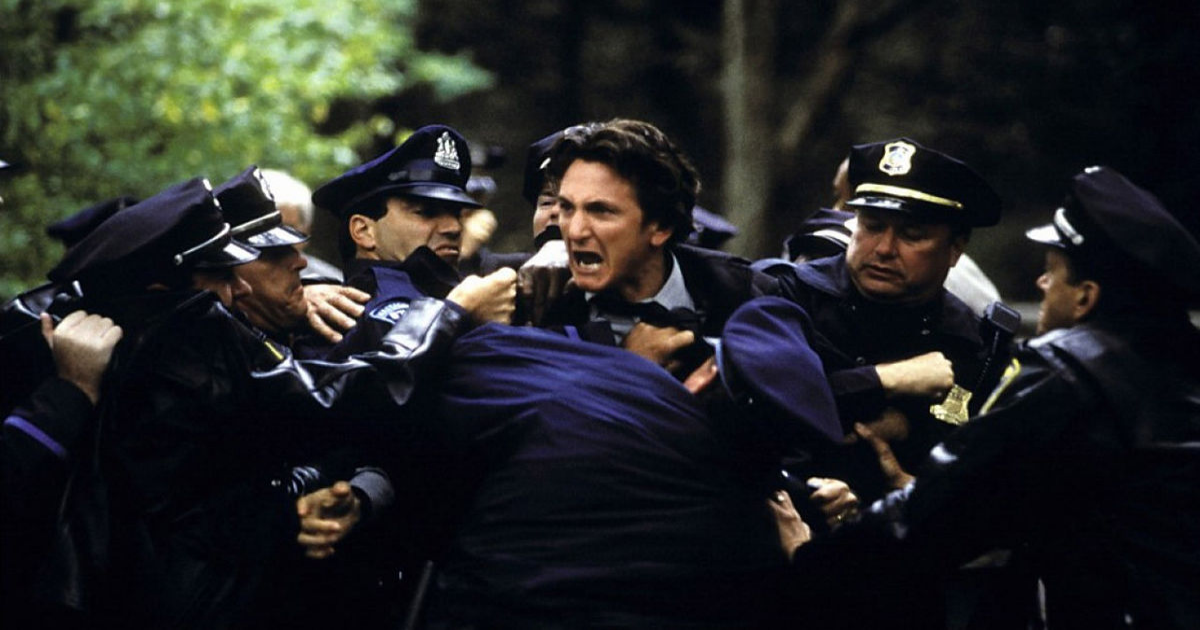
Eastwood tackles the material in Mystic River with a sure and confident hand. It also represents a unique departure from some of his other films. Much of the action takes place under the cover of darkness, and Eastwood is able to find beauty in that darkness. The filmmaker focuses on a character’s eyes or the gleam of a weapon, for instance, as darkness permeates most of the scene.
For the scenes that take place during the day, the filmmaker opts for tight close-ups that linger over the emotions of his impressive cast. There is something uncomfortably intimate about Mystic River, and that has much to do with the subject matter. None of this story is particularly easy to digest, and Eastwood adds to that discomfort with his choices to frame scenes in such a way that’s almost intrusive. The audience feels a growing sense of dread and tension as more of the story unfolds.
Using Lehane’s novel and Brian Helgeland’s screenplay as a blueprint, Eastwood profoundly explores generational trauma and how the sins of the past can leave a permanent mark on our present. Even though the abuse only happened to Dave, the effects of the event leave a mark on all three friends, with Dave being the primary victim and the others feeling a sense of survivor’s guilt for not being subjected to it themselves.
The ordeal forever changes their union because they’re never quite able to look at each other the same way again, as each friend deals with the trauma differently. Jimmy is stunned by the act of abuse but can’t give Dave the support he needs, which then bleeds into their present when Jimmy begins to suspect that Dave had something to do with his daughter’s murder. He doesn’t want to consider that his friend would do something like this because of the trauma he endured as a child, but as evidence mounts against him, Jimmy has to decide if friendship and loyalty overshadow his need for vigilante justice. The story is rich with so many complexities that make it some of Eastwood’s most compelling work as a filmmaker.
Eastwood also takes his time with the story and lets it unfold as it should. Mystic River is very nuanced, and he knows he’s dealing with heartbreaking subject matter that requires patience and respect. The story is grounded in so much reality that Eastwood seems keenly aware that a viewer might be an actual victim of this kind of abuse themselves, so he delicately approaches the topic and gives it the emotional weight it deserves.
He also shows the uncomfortable side of abuse where the victim, unfortunately, can be shamed because of the event. Dave becomes an outsider later in his life, even with his close friends, something that sadly comes along with this kind of trauma. Eastwood approaches all of this responsibly and provides a very balanced outlook to all the events transpiring on screen.
Mystic River has become known for its powerhouse performances, and Eastwood pulls the very best from his ensemble cast. While the scenes with the young actors are brief in the beginning, they set the tone of who these people will be twenty-five years later. Dave becomes the outcast because of the event; Jimmy lacks empathy and doesn’t trust authority, while Sean becomes the grounded one of the bunch and a police officer in an attempt to prevent a tragedy like this from ever happening again.
Clint Eastwood Pulls Powerhouse Performances From His Cast
Tim Robbins, Sean Penn, and Kevin Bacon do a great job conveying the unspoken tension between all three of these characters. There is a sense of loyalty, but so much has taken place over the years that it has forced them all to lead very different lives. As a group, they are uniformly excellent. You feel the history between the characters and the bonds that were broken, only to be reopened by a new traumatic event.
On their own, Penn gives the performance of a lifetime as Jimmy, and it’s not a shock that this turn finally earned him his first Academy Award for Best Actor. Penn is a dominant presence in all of his scenes, and there is a sense of uncertainty whenever he’s around because you don’t know exactly what move he will make.
That’s not to say he doesn’t display layers. All of that bravado is broken once he finds out his daughter is murdered. It’s hard to pinpoint a director’s best scene on film, but what Eastwood pulls out of Penn during the “Is that my daughter?” sequence represents some of his very best work as a filmmaker.
Robbins also received an Academy Award for Best Supporting Actor for his work here, representing a much-deserved win. As Dave, Robbins is the tragic and emotional heart of the story. The viewer feels instant empathy for Dave due to what he went through as a child, but you’re also left questioning everything when it seems like Dave could be the one who murdered Katie.
Robbins keeps you on your toes throughout, making you question his innocence while also seeing the tenderness in him as he interacts with his own child, who is just about the age he was when he was abused. As for Bacon, of the three male leads, he gives the most subdued performance, but it suits the character. He’s trying to make everything right and keep it all together. It’s a subtle performance that carries its own emotional weight.
Eastwood also makes the supporting roles worthy of attention. Marcia Gay Harding, as Dave’s wife Celeste, puts in powerful work here that earned her a Best Supporting Actress Oscar nomination, while Laura Linney more than holds her own with Penn as his second wife, Annabeth. In addition, Laurence Fishburne also fills in as Sgt. Whitey Powers in another excellent part.
Mystic River is a haunting and poetic motion picture that showcases a director laying it all out on the table. Eastwood gives the audience everything he has as a director and pours it out across the screen in a film that is just as powerful twenty years after its initial release.
Clint Eastwood
Clint Eastwood’s Most Iconic Non-Western Role Was Only Possible Because Of This Actor

SUMMARY
Clint Eastwood’s role in Dirty Harry is considered one of his most iconic, and the film is a classic in the crime genre.
Paul Newman initially turned down the role of Harry Callahan in Dirty Harry but recommended Clint Eastwood for the part.
Newman declined the role due to his liberal beliefs, and Eastwood’s portrayal of Callahan differed from Newman’s perspective, but both respected each other.
SCREENRANT VIDEO OF THE DAY

Although Clint Eastwood first built his impressive career on Western movies like The Man with No Name franchise and The Outlaw Josey Wales, the actor’s biggest non-Western role in Dirty Harry is one of his most iconic, and it might have never happened without this one actor. Clint Eastwood began acting in the 1950s, and over several decades, became a staple in the Western genre. What makes Eastwood stand out is the fact that he has not only appeared in countless films, but has also directed them himself. Films like Unforgiven and Gran Torino have defined his career. However, Dirty Harry is by far one of Clint Eastwood’s best films.
In 1971, Clint Eastwood starred in the neo-noir action film Dirty Harry. The film, and its adjoining sequels, follow Inspector “Dirty” Harry Callahan, a rugged detective that is on a hunt for a psychopathic serial killer named Scorpio. The Dirty Harry franchise lasted from 1971 to 1988, and has since been considered a classic. In fact, Dirty Harry was selected for preservation in the United States National Film Registry by the Library of Congress because of its cultural significance. However, this film might have been vastly different if Clint Eastwood had never been in it, and scarily enough, this definitely could have happened back in 1971.
Paul Newman Rejected Dirty Harry Before Suggesting Clint Eastwood For The Role
Dirty Harry went through many production challenges before it was actually made, and one of those included casting the iconic detective. In the film’s early stages, the role was offered to actors such as John Wayne, Robert Mitchum, Steve McQueen, and Burt Lancaster. However, for various reasons, including the violence that permeates the film, these actors all declined. For a time, Frank Sinatra was attached to the project, but he also eventually left the production. In reality, Clint Eastwood wasn’t even in the cards for portraying Dirty Harry, but his big break came when Paul Newman was offered and declined the role.
Paul Newman, like many amazing actors before him, was offered the role of Harry Callahan, but ultimately said no. However, what makes his refusal stand out among the rest is that he recommended another actor that could be perfect for the role: Clint Eastwood. At this time, Eastwood was in post-production for his first film Play Misty for Me, meaning his career was taking something of a turn. Also, unlike his predecessors, Eastwood joined up with Dirty Harry, just as Newman thought he would. Because of his Western roots, the violence and aggression that made up Dirty Harry didn’t bother Eastwood at all.
Why Paul Newman Turned Down Dirty Harry
Paul Newman turning down the leading role in Dirty Harry may not seem too surprising considering the host of other actors that also declined the movie, but Newman definitely had his reasons. While previous actors had condemned the movie for its incredible violence and themes of “the ends justify the means,” Newman refused to take the role because of his political beliefs. Since Harry Callahan was a renegade cop, intent on catching a serial killer no matter the cost or the rules that would be broken, Newman saw this character as too right-wing for his own liberal beliefs.
Paul Newman was an outspoken liberal during his life. He was open about his beliefs, so much so that he even made it onto Richard Nixon’s enemies list due to his opposition of the Vietnam War. Other issues that Newman spoke out for included gay rights and same-sex marriage, the decrease in production and use of nuclear weapons, and global warming. As a result of his politics, Newman quickly denied the role of Harry Callahan. In an interview with Entertainment Weekly as reported by Far Out Magazine, Clint Eastwood commented that he didn’t view Callahan in the way Newman did, but still respected him as an actor and a man.
Would Dirty Harry Have Been So Successful Without Clint Eastwood?
Ultimately, it’s hard to say whether Dirty Harry would have been successful without Clint Eastwood. Arguably, any big-time actor could have made the film succeed solely based on their fame. However, one aspect of Dirty Harry and its carousel of actors is that the movie had various scripts, all with different plots. So, if Dirty Harry had been in a different location with a different serial killer and a different lead actor, there’s a chance it wouldn’t have been nearly as successful. In the end, Dirty Harry is a signature for Clint Eastwood, and most likely, audiences are lucky that it was made the way it was.
Clint Eastwood
The story of how Clint Eastwood prevented Ron Howard from embarrassment

A star of American cinema both in front of and behind the camera, Ron Howard is often forgotten when recalling the greatest directors of modern cinema, yet his contributions to the art form remain unmatched. Working with the likes of Tom Hanks, Chris Hemsworth, Russell Crowe and John Wayne, Howard has brought such classics as Apollo 13, A Beautiful Mind and Rush to the big screen.
Entering the industry in the late 1950s and 1960s, Howard started his career as an actor, making a name for himself in shows like Just Dennis and The Andy Griffith Show before his role in 1970s Happy Days would catapult him to national acclaim. His directorial debut would come at a similar time, helming 1977’s Grand Theft Auto, the ropey first movie in a filmography that would later become known for its abundance of quality.
Known for his acting talents, Howard wouldn’t become a fully-fledged director in the eyes of the general public until the 1980s, when he worked with Tom Hanks on 1984’s Splash and George Lucas for the 1988 cult favourite Willow.
With hopes of becoming the new Star Wars, Willow was instead a peculiar fantasy tale that told the story of a young farmer who is chosen to undertake the challenge to protect a magical baby from an evil queen. Starring the likes of Warwick Davis, Val Kilmer and Joanne Whalley, the film failed to make a considerable dent in pop culture at the time, largely being ridiculed by critics and audiences alike.
Screened at the Cannes Film Festival, the movie was spared humiliation by none other than Clint Eastwood, who saw the craftsmanship behind the picture, as described by Ron’s daughter, Bryce Dallas Howard.
Speaking to Daily Mail, the actor recalled: “My dad made a film called Willow when he was a young filmmaker, which screened at the Cannes Film Festival and people were booing afterwards. It was obviously so painful for him, and Clint, who he didn’t know at that time, stood up and gave him a standing ovation and then everyone else stood up because Clint did”.
Dallas Howard, who worked with Eastwood on the 2010 movie Hereafter, became very fond of Eastwood as a result, looking up to him as an exemplary Hollywood talent. “Clint puts himself out there for people,” she added, “As a director he is very cool, very relaxed, there’s no yelling ‘action’ or ‘cut’. He just says: ‘You know when you’re ready.’ I told my dad he should do that!”.
Take a look at the trailer for Howard’s 1988 fantasy flick below.

My Roommate Demands I Pay Her Back Half the Rent Because She Was Away for Two Weeks

My Landlord Stole My Beautiful Christmas Tree and My Payback Was Harsh

A Stranger Sat Next to Me While My Dying Husband Was in the Hospital and Told Me to Put a Hidden Camera in His Ward to Uncover a Truth
Trending
-

 Entertainment1 year ago
Entertainment1 year agoJohn Wayne’s son speaks on military service, Hollywood life and his dad, ‘The Duke’ – My Blog
-

 Entertainment1 year ago
Entertainment1 year ago40 Legendary John Wayne Quotes – My Blog
-

 Entertainment1 year ago
Entertainment1 year agoNew biography reveals the real John Wayne – My Blog
-

 Entertainment1 year ago
Entertainment1 year agoWhy one POPULAR ACTOR was FIRED from THE SONS OF KATIE ELDER and lost his career as a result! – Old western – My Blog
-

 Entertainment1 year ago
Entertainment1 year agoRio Lobo (1970) marked the last collaboration between John Wayne and Howard Hawks. – My Blog
-

 Entertainment1 year ago
Entertainment1 year agoHow Maureen O’Hara Broke Her Hand During Iconic Scene With John Wayne – My Blog
-

 Entertainment1 year ago
Entertainment1 year agoJohn Wayne and the ‘Bonanza’ Cast Appeared in This Epic Coors Light Commercial – My Blog
-

 Entertainment1 year ago
Entertainment1 year agoDid John Wayne really have a good time filming 1972’s The Cowboys? – My Blog

